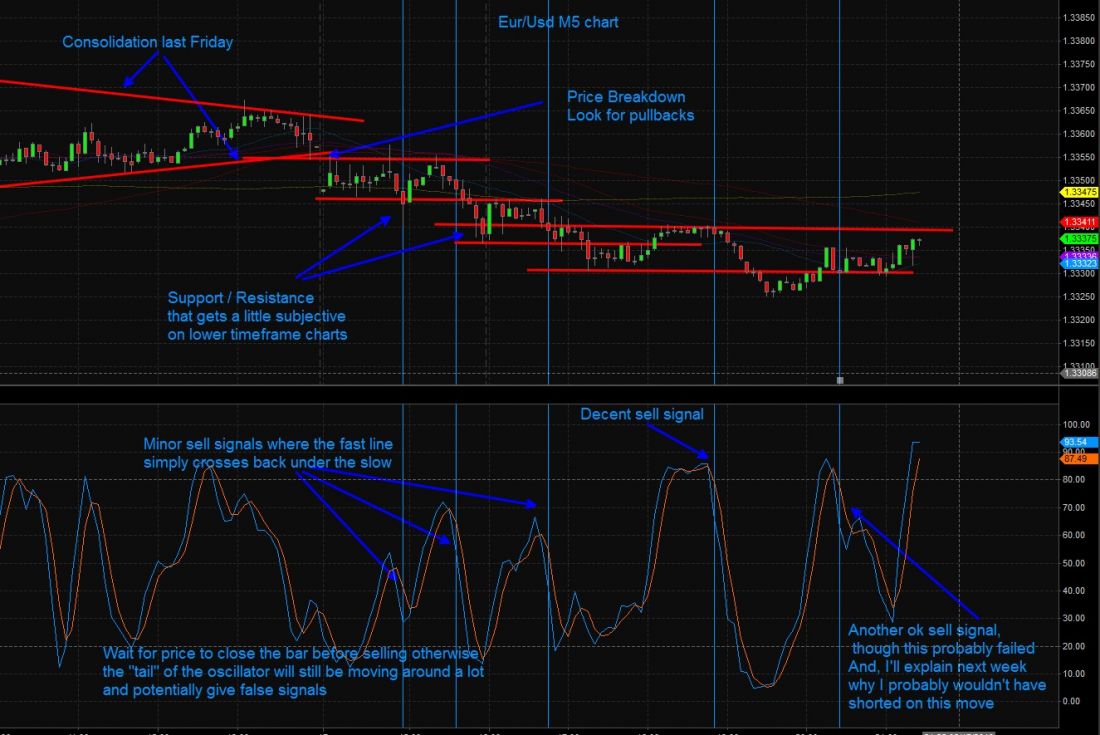“The marvel of all history is the patience with which men and women submit to burdens unnecessarily laid upon them by their governments.” George Washington
Happy President’s Day. Back in college, I got a degree in business because I thought it was practical and another one in history because I thought it was fun (and a minor in math for a touch of masochism). The longer I’m in business, the more I think the history degree is actually the more practical of the two.
FAVORITE STRATEGY
That being said, let’s talk about the market. Not a lot is going to happen for the rest of the day so I’m going to share with you a favorite strategy I use. I use this strategy when I trade either pre London open, or a continuation of this strategy around and after the open. This works to pick trend continuations or overnight swing trades. Variations of this do work pretty well in different market conditions or on different time periods. But I enjoy using it for short term trading.
SLOW NIGHT TRADE
See Figure 1 below, which shows last night’s euro movement on a 5 minute chart. After New York closes down, price action tends to dry up. Asian trading on the euro/dollar (EUR/USD) is generally slow moving, occasionally directional but often just falls asleep. This generally continues until London comes online. But you can still make pips before the open. A variation of this strategy works very well after the London open when there is larger directional movement. I’ll discuss this in more detail next week once I’ve laid out a few of the basics.

ENTRY POINTS
Last night, price gapped down a few pips, closed the gap and then broke down further. So, price was telling us it wants to go short. Next step is picking an entry. One option is to simply jump in, but I like trading pullbacks in the direction of the trend.
TOOLS TO USE
When scalping on shorter timeframes, support and resistance and fib areas become fuzzier. I find two techniques useful for entering in the direction of a trend. First, last night, I would look for pullbacks to prior support and short off those areas. Second, I would use the stochastic for entry signals in the direction of the trend. This is done one of two ways. In addition I only use the stochastic in the direction of the dominant trend that I’m looking at. (I find this to be a lousy tool for picking trend changes.)
First: Ideally, one waits for the oscillator to reach overbought territory (in a short move); and then wait for the lines to cross back down in the direction of the trend. In other words, once the indicator moves above 75 or 80% hang out, and wait for one bar to close with the indicator back below the overbought line.
Second: If you want to be more aggressive, you can pick up additional entry points simply by re-selling when the fast line crosses under the slow line. (Blue line crosses under the red line on my graph). This is a little more dangerous, but hey, we don’t make money staying out of the market. If you need stops, keep them far enough away so as not to get caught in a spike move. You probably won’t make a lot of pips pre London open, but you can make a few.
Now I realize this is hard core old school technical trading, but if it works so what right? Next week I’ll talk about additional ways to develop on this strategy. Of course it doesn’t work all the time, but when done right, it can be very successful.
= = =




